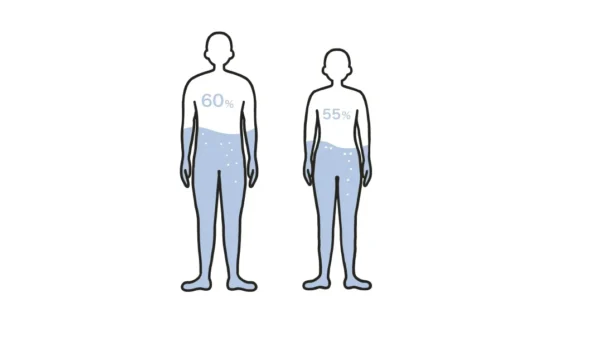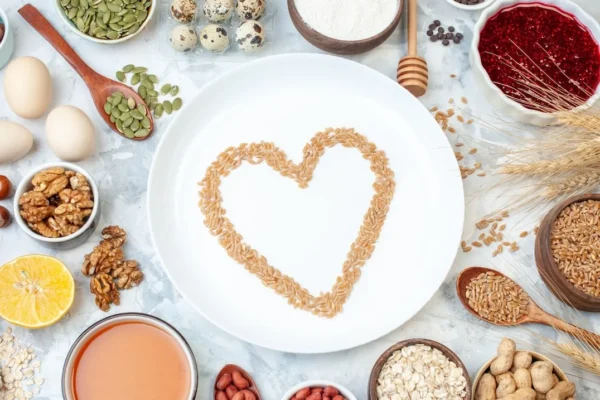Hypertension is a chronic disease characterized by consistently high blood pressure (140/90 mmHg or higher) that can lead to serious health problems in the long term. Therefore, adopting a healthy lifestyle and proper diet is one of the most effective ways to keep blood pressure under control. The main points that hypertension patients should pay attention to while eating are as follows:
- Hypertension and Salt Consumption
- The Importance of Vegetable and Fruit Consumption for Hypertension Patients
- Benefits of Whole Grain Products for Hypertension
- Healthy Protein Options for Hypertension Patients
- What Hypertension Patients Should Not Eat
- Hypertension and Healthy Fat Consumption
- The Importance of Water Consumption in Hypertension
- Hypertension and Alcohol and Caffeine Consumption
- Pay Attention to Portion Control
- Conclusion
Hypertension and Salt Consumption
Daily salt consumption should be kept below 5 grams. Excess salt can raise blood pressure, worsening hypertension. Avoid adding extra salt to meals and don’t consume foods high in sodium such as pickles, processed meat products, and ready-made soups. You can prefer alternative flavor enhancers such as spices and lemon instead of salt.
When shopping at the grocery store, be careful to choose low-sodium (salt) products. Also, try reducing the amount of salt when cooking and flavoring with more fresh herbs and spices.
The Importance of Vegetable and Fruit Consumption for Hypertension Patients
Vegetables and fruits are rich in potassium, which helps eliminate excess salt from the body, thus lowering blood pressure. Foods such as bananas, spinach, broccoli, avocados, oranges, and tomatoes are particularly beneficial for hypertension patients. Make sure to eat enough fresh vegetables and fruits at each meal. You can eat carrots, cucumbers, or a handful of dried fruit for snacks instead of chips or ready-made snacks.
Benefits of Whole Grain Products for Hypertension
Refined carbohydrates can quickly raise blood sugar and cause weight gain in the long run, worsening hypertension. Instead, prefer whole grain products such as whole wheat bread, oats, brown rice, and bulgur. Whole grains both keep you full and support heart health.
You can make a big difference with a small change by consuming whole wheat bread instead of white bread. Choosing oatmeal instead of sugary cereals for breakfast is good for blood pressure.
Healthy Protein Options for Hypertension Patients
Your protein intake should consist of lean meat, chicken, fish, eggs, legumes, and low-fat dairy products. Especially fish rich in omega-3 fatty acids, such as salmon, can help regulate blood pressure by supporting heart health. Try to consume fish at least twice a week.
Prefer oven-baked or grilled dishes instead of fried meat products. Also, you can add variety to your meals by adding protein-rich lentils or chickpeas.
What Hypertension Patients Should Not Eat
Patients with hypertension should avoid processed and ready-made foods. This is because these products usually contain high amounts of salt, sugar, and harmful additives. Stay away from chips, canned products, ready-made sauces, and packaged snacks. Meals prepared at home with fresh and natural ingredients are both healthier and more effective in managing high blood pressure.
Prepare your own meals with healthy ingredients by making weekly meal plans instead of ready-made meals. Prefer fresh or frozen vegetables instead of canned ones.
Hypertension and Healthy Fat Consumption
Fried foods and products containing trans fats, such as margarine, can increase the risk of arterial blockage and negatively affect blood pressure. Prepare your meals by boiling, grilling, or steaming methods. You can balance your cholesterol levels by preferring healthy oils such as olive oil.
You can get a lighter taste by using olive oil and lemon when adding sauce to your salads. Try using natural oils such as olive oil or butter instead of margarine in your recipes.
The Importance of Water Consumption in Hypertension
Drinking enough water helps regulate blood pressure by maintaining the body’s fluid balance. Increase your daily water consumption while avoiding sugary and carbonated drinks. Especially preferring natural spring water or freshly squeezed fruit juices instead of ready-made fruit juices and energy drinks can be good for hypertension.
Always carry a water bottle with you and make it a habit to drink water at regular intervals throughout the day. To meet your need for sweet drinks, you can create a natural flavor by adding a few slices of lemon, mint leaves, or fruit slices to water.
Hypertension and Alcohol and Caffeine Consumption
Excessive alcohol consumption and high amounts of caffeine can raise blood pressure. Limit or completely quit alcohol intake. Be careful not to overdo it by limiting caffeine consumption to 1-2 cups of coffee per day.
You can prefer herbal teas or decaffeinated coffee instead of caffeinated drinks. You can try alternative drinks such as mineral water flavored with natural fruit flavors instead of alcohol.
Pay Attention to Portion Control
The amount of portions consumed is an integral part of a healthy diet plan. Eating too much can lead to unnecessary calorie intake and weight gain, worsening hypertension. Therefore, it is important to eat in a controlled manner by paying attention to portion sizes.
Make it a habit to fill half of your plate with vegetables, a quarter with protein, and the other quarter with whole grain products when serving your meals. You can increase your feeling of fullness by drinking a glass of water before meals.
Conclusion
In conclusion, creating a healthy diet can help hypertension patients keep their blood pressure under control. What should hypertension patients eat: Fresh vegetables and fruits, whole grain products, healthy protein sources (fish, chicken, legumes), and healthy oils (olive oil) should be preferred. What hypertension patients should not eat: Excessive salty and processed foods, sugary drinks, fried foods, and excessive alcohol consumption should be avoided.






